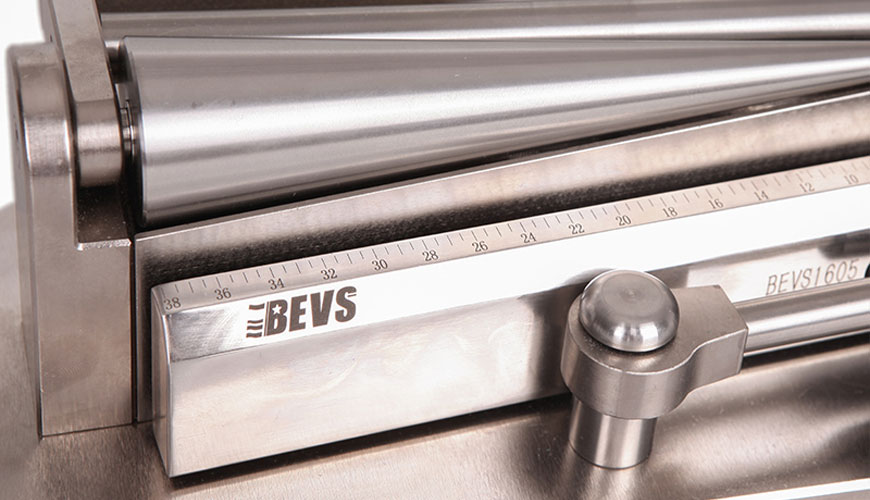

The ISO 6860 standard, developed by the International Organization for Standardization (ISO), defines an experimental test procedure for evaluating the resistance of a paint, varnish or related product coating to cracking and/or separation from a metal substrate when subjected to bending around a tapered mandrel under standard conditions.

Prepared by ISO 6860, Technical Committee ISO/TC 35, Paints and varnishes, Subcommittee SC 9, General test methods for paints and varnishes. This second edition supersedes and supersedes the technically revised first edition (ISO 6860:1984).
This International Standard defines the resistance of coatings of paints, varnishes and related products to cracking and/or separation from the substrate under different deformation conditions.
The mandrel of the experimental setup should be in the form of a truncated cone (0 ± 3,1) mm long, with a small diameter (d0,1) (1 ± 38) mm and a large diameter (d0,1) (203 ± 3). The mandrel is mounted horizontally on a base plate. An operating lever with pull rod is provided to twist the test panel around the mandrel. The assembly is also equipped with a device for clamping the test panel.
Unless otherwise agreed, test panels shall conform to ISO 1514 requirements and shall be made of burnished steel, burnished tin or soft aluminium. The test panels will be flat and free of distortion and no visible protrusions or cracks in the surface.
The test panels shall be rectangular with sides measuring approximately 75 mm × 150 mm and have a maximum thickness of 0,8 mm, unless otherwise agreed or specified between the parties concerned. Test panels can be cut to size after coating and drying, provided there is no deterioration. In the case of aluminum panels, the longitudinal direction of metallurgical rolling should be at an angle of 90° to the axis of the cone.
Cover the panels with the tested coating material or system by a method agreed between the parties involved. If the coating under test is applied by brushing, any brush marks should be at a 90° angle to the axis of the cone.
Dry (or aged in the stove) each coated test panel for the specified time. Then condition the coated panels at (23 ± 2)°C and (50 ± 5) % relative humidity for a minimum of 16 hours. Perform the test procedure as soon as possible after conditioning.
For any specific application of the test method specified in this International Standard, more details should be given in addition to those given in the preceding items.
Among the services provided by our organization within the framework of material testing services, there are also ISO 6860 standard tests.
To get an appointment, to get more detailed information or to request an evaluation, you can ask us to fill in our form and reach you.